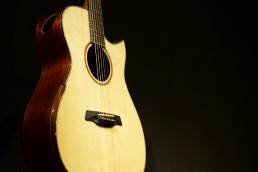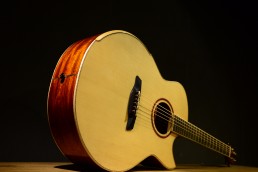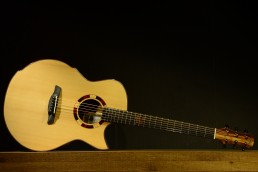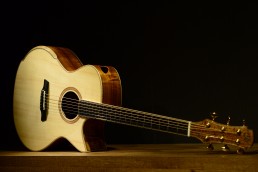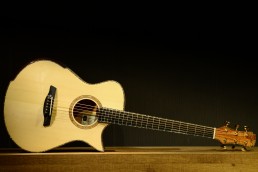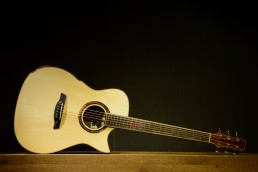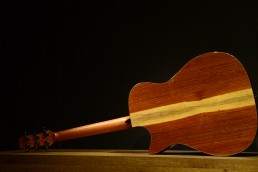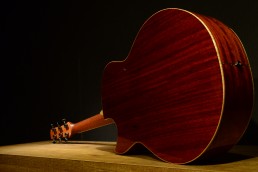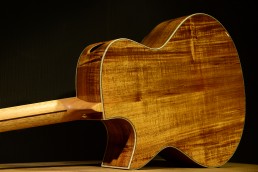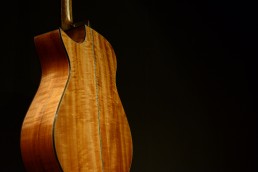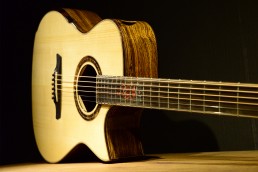The art of lutherie spans over more than 2 centuries, and in that time, many forms of conventions have been set as traditionally accepted standards. In discussion circles, the most often talked about materials for acoustic guitar building involve some species of Spruce, Mahogany, sometimes Maple, and of course Rosewood.
The use of alternative tonewoods has also led to the discovery of some unique tones.
In recent times, more and more luthiers have started experimenting and looking for alternative materials, in a move that has set the community in a forward motion of innovation in the craft. This has spurred the progress of the art on even further as a result. The push for new materials has also been accelerated due to the implementation of restrictions on the trade of Rosewood by the Convention on International Trade in Endangered Species of Wild Fauna and Flora (CITES), with requirements for tonewoods such as Indian Rosewood and Cocobolo to be shipped with permits.
The use of alternative tonewoods has also led to the discovery of some unique tones. Here we shall explore some of the ones we use in our builds.
Santos Rosewood
Also known as Pau Ferro, Santos Rosewood sports a reddish orange hue, and has varying grain patterns that can be quite similar to other species of tonewoods like Cocobolo. Tonally, it has sweet highs with a powerful bass. Pairing it with Adirondack Spruce makes for an instrument that will have a lot power, overtones and dynamics.
African Padauk
With a striking, almost iridescent red colour and powerful tone, African Padauk is catches the eye and ears. Sporting powerful low mid frequencies, instruments built with Padauk can be relatively powerful, with a fair amount of presence. Adding an Adirondack Spruce top raises its overall dynamic range with more overtones.
African Ovangkol
African Ovangkol has become widely popular over the last few decades for its environmental sustainability, and of course, its tonal properties. Considered to be a distant relative of Rosewood, it shares similar characteristics to Rosewood, with a wider mid frequency response, and a more pronounced high frequency response. Usually paired with Sitka Spruce, it results in a sonically dynamic instruments that cover a lot of ground.
Australian Blackwood
Golden yellow in colour, it sometimes has a striking flame in its grain, like Flame Maple. Relatively balanced across the frequency spectrum, it also possesses healthy amounts of overtones, adding complexity to its tonal palette. Top it off with Adirondack Spruce, and the result is an instrument that is all rounded, with a rare blend of a great dynamic range, articulation, and full sound.
Tasmanian Myrtle
Tonally similar to Australian Blackwood, with a little more lower mids and bass, Tasmanian Myrtle is another great alternative tonewood that has become increasingly popular with players and collectors. The grain, although varied, is distinctively identifiable by its pinkish hue, with sometime a “quilted”, marble like look. It is also another great tonewood to pair with Adirondack Spruce for an instrument, giving it more overtones and power.
Bocote
A close relative to Ziricote, Bocote shares similar characteristics to its cousin in terms of its looks with dramatic grain patterns, albeit with a slightly lighter hue. Tonally, they are very similar, offering plently of bass and upper mids. An Adirondack Spruce top can compliment it by bringing out some lower mids, and giving it more headroom to utilise its tone.

